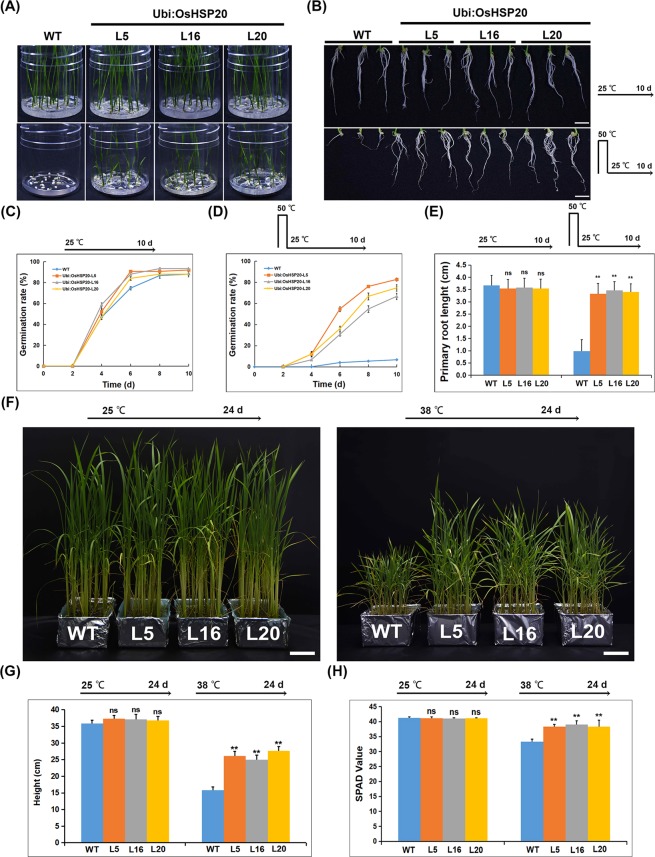Figure 5.
Comparison of seed germination rates (A,C,D), root lengths (B,E), plant height (F,G), and leaf chlorophyll contents (H) from WT and transgenic OsHSP20 rice plants under heat stress. (A) Germination rates of untransformed wild-type (WT) and lines overexpressing OsHSP20 (Ubi:OsHSP20-L5, -L16 and -L20) under thermal treatment (50 °C) for 12 h. Photographs were taken after 10 days of recovery at 25 °C. (B) Root length phenotype of 10-day-old untransformed wild-type (WT) and lines overexpressing OsHSP20 (Ubi:OsHSP20-L5, -L16 and -L20). Imbibed seeds were treated at 50 °C for 12 h, and photographs were taken after 10 days of recovery at 25 °C. Scale bar is 1 cm. (C,D) show time course of germination (in days after imbibition) for freshly harvested seeds of WT and the overexpression lines. Seeds were surface-sterilized and plated on 1/2 MS medium under normal growth conditions (25 °C) (C) or were first incubated at 50 °C for 12 h and then moved to a growth chamber set at 25 °C (D). Germination rate was measured at 2 d intervals after shifting to 25 °C. Data represent the mean ± SD (P < 0.05) from three independent experiments. (E) Quantitative analysis of primary root lengths of 10-day-old seedlings from WT and each transgenic line. The average ( ± SD) values are from three biological replicates with 30 plants for each line and replicate. Significant differences between WT and transgenic plants are indicated by asterisks (ns, not significant; **P < 0.01). (F) Phenotype of transgenic and WT plants grew at 25 °C for 24 days (Left) and 38 °C for 24 days (Right). (G) Quantitative analysis of plant height from WT and each transgenic line grew at 25 or 38 °C for 24 days. (H) Quantitative analysis of leaf chlorophyll contents from WT and transgenic lines grew at 25 or 38 °C for 24 days.

